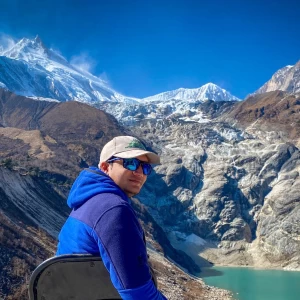See what actually a hidden Kingdom looks like
You might have heard Upper Mustang is a hidden Kingdom. But might have the misconception that Hidden because it is unexplored. But that is not the actual reality behind it.
For sure, the district was annexed to Nepal in the year 1795 and was a restricted area until 1992. It is still a restricted area for travel but you can go there by getting a special permit of $500 per person for the first 10 days and $50 for every additional day of exploration.
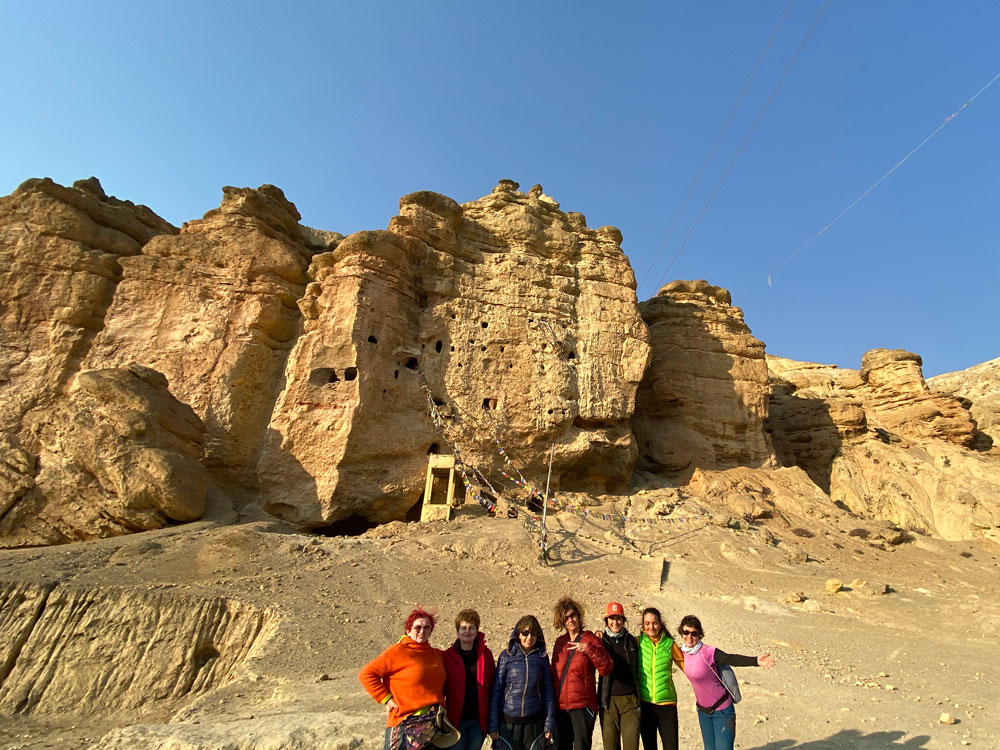
Now about the Hidden Kingdom concept. The residential areas are secret here. You cannot find a village without the help of a signboard. The houses are built like camouflage, not regarding the color camouflage, though. The actual meaning is that you cannot see a village in this region unless you get up close to the particular village.
Now, if you see Lo Manthang which is the capital of the Northern region then you need to enter the village to see its presence of it. However, due to the Royal Palace being quite tall now, you can see its prominence from quite a distance.
The significance of this kind of structure is to stay hidden from the rest of the world whom the locals considered a threat before.
For more details click here: Luxury Upper Mustang Jeep Tour
Living with the locals

All the villages own at least a few hotels but not so many. Thus, to stay in this place you will have to choose to stay in whatever is available. While you stay in the hotels they are run by the locals there unlike other places in Nepal.
Moreover, their hospitality is beyond your expectations. They greet you with the Tibetan Culture and make you feel at home for sure. You will also get to hear their stories, their father’s and grandfather’s stories. Yes, many of them do not know English, yet, you can always get a translation with the help of your guide.
Similarly, while departing from the hotels, the locals bid you farewell by offering you Khada (a special Tibetan Scarf). They always wish for your prosperity even if they are not very prosperous being neglected by the government.
Thus, you will not feel a little hesitation in their hospitality. Prepare to be smiling almost all the time because that’s what these Local Tibetans do trying to keep you happy.
You can also be involved in their kitchens, kitchen gardens, child care, prayers, or even their festivals like Tiji.
Booking Available for: Upper Mustang Buddhist Tour
Exploring the diverse landscapes
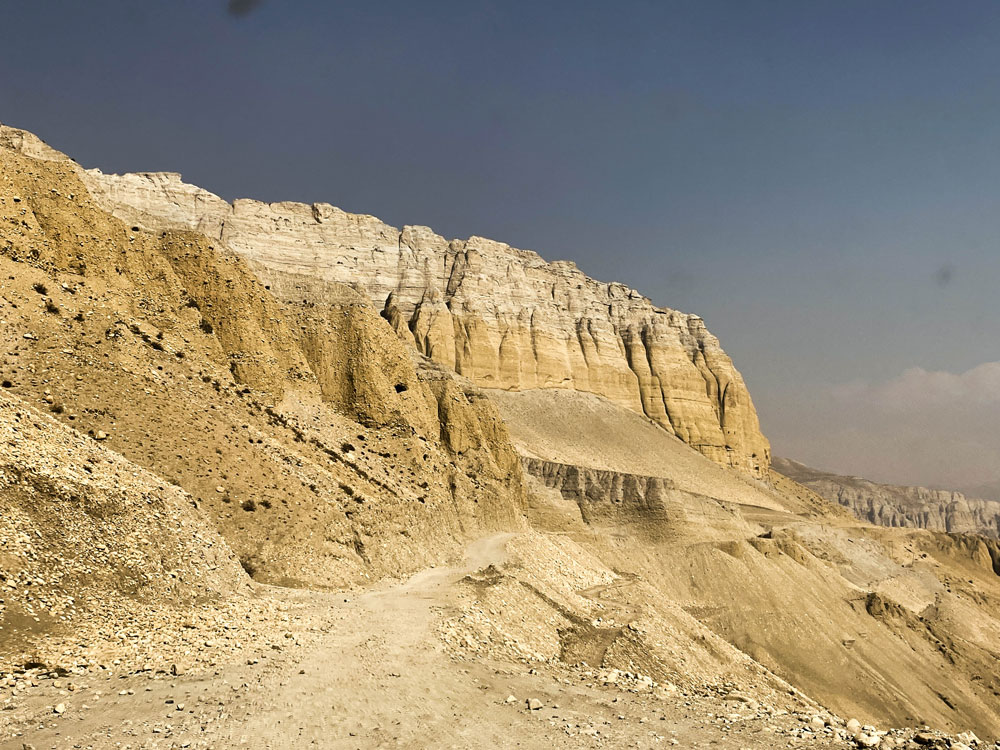
The whole district is known to be the place behind the mountains. Once you cross the village called Kobang, the mountains will appear on the South of you. You can easily see the up-close view of Mt. Dhaulagiri (8,167 m | 26,795 ft), Nilgiri (7,061 m | 23,166 ft)., Annapurna (8,091 m | 26,545 ft), Tukuche Peak (6,920 m | 22,703 ft) and Thorong Peak( 5751 m / 20,157 ft).
Check here to get better view of Mount Everest
Beyond the mountains, the Lost Kingdom is a barren landscape where you can spot a small number of trees that are leafless almost throughout the year. Moreover, the whole region is extremely windy, so the trees cannot grow higher. The highest wind speed recorded in the area is 25 meters per second, which is way more than normal.
Even being barren, this place does not disappoint anyone showing its amazing landscape.
Upper Mustang's beauty lies in its raw honesty. The towering red hills of Dhakmar stand detached from one another, creating a landscape of captivating silhouettes. Nature's artistry is further showcased in the uniquely shaped hills that dot the region. Moreover, Kaligandaki passing through the Kaligandaki gorge also looks majestic.
To adapt to this landscape the houses are also made in such a way that they stay hidden among those hills. Their low-lying structures blend seamlessly with the windswept hills.
Also check, Affordable Mustang Tour - 5 Days
Exploring the stories of ancient worlds
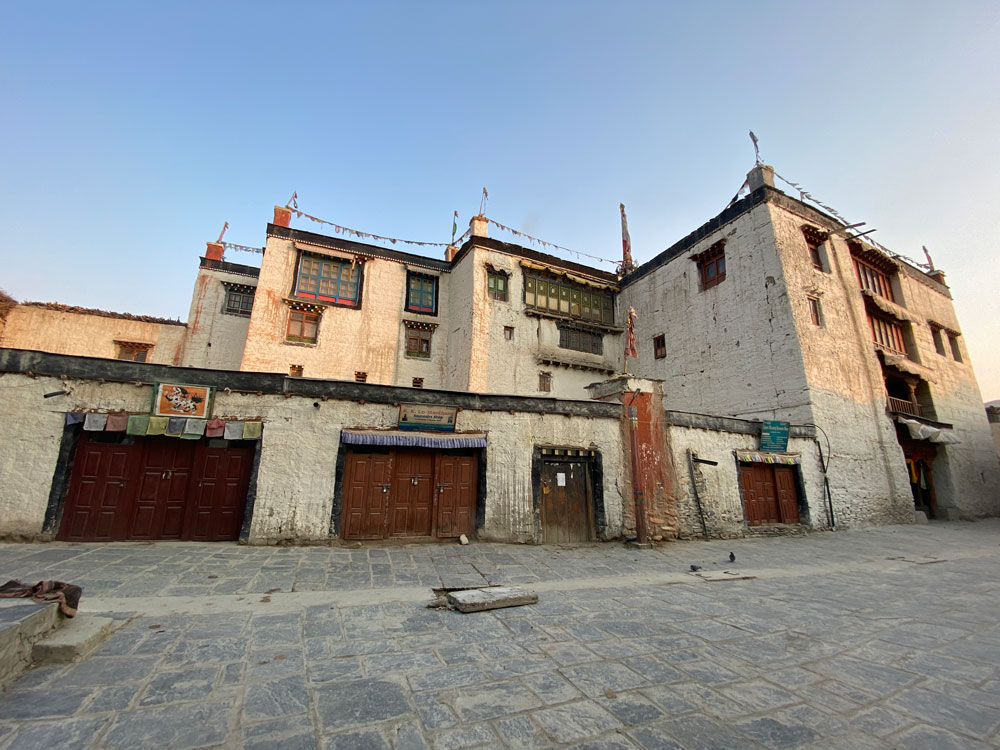
Every place has a separate and amazing story. The same goes for the city of Lo Manthang. More to that, some locals are more than happy to share their experiences with you. You will for sure find the knowledge has been transferred so well to the newer generations that they never forget their roots.
Here are some of the interesting stories that our groups who visited the place heard.
Dorje Chhen in Chhoyede Gompa
Dorje Chhen is one of the most powerful Gods of Buddhism in Lo Manthang. Right now sitting as the central God in Chhoyede Gompa was previously on another hill nearby.
There used to be a Monastery run by the Lama Monks on that particular hill. This monastery was used for the burial rituals of the dead. However, one day a dead body woke up all of a sudden which was quite a big surprise. The body then started controlling other humans like zombies by making eye contact and a simple touch. This act of the body created a big chaos in Lo Manthang.
Now to get rid of that problem the Lamas took the help of fire. They collected lots of grass from the available bushes and then covered the Monastery with it where the dead body stayed. Then after, they burned the whole place down. This marked the end of the negative power.
Even right after the incident, the Lo people believe that Dorje Chhen flew from the Monastery and came to Lo Manthang in Chhoyede Gompa to live among them.
The hypothetical theories of the Sky Caves
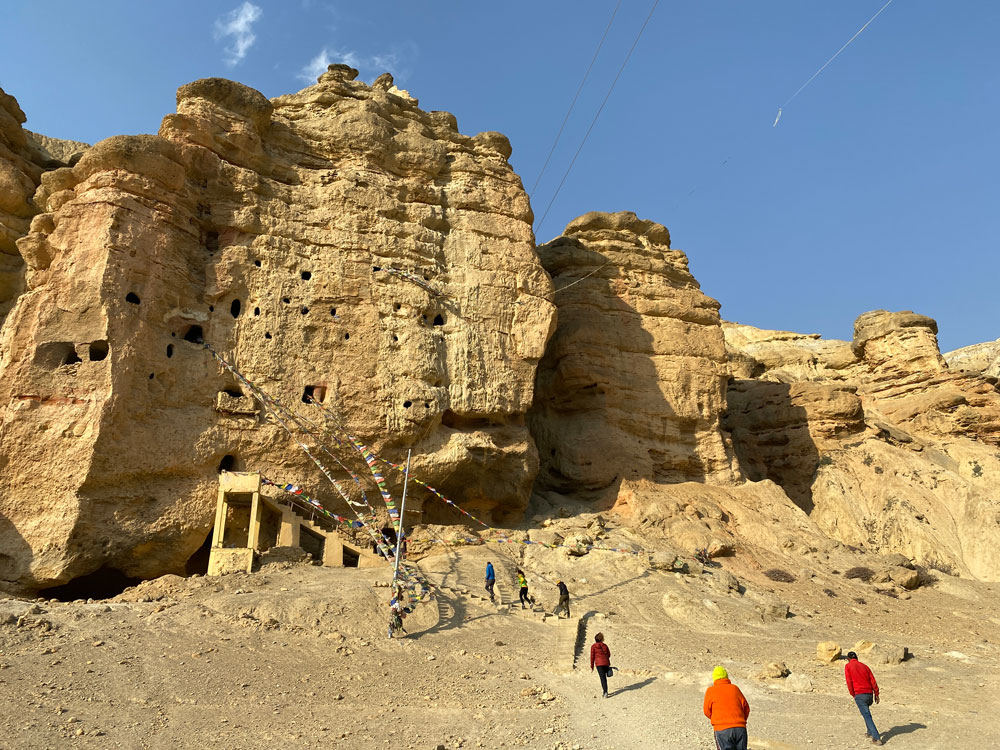
It is still unsure why the sky caves are actually made in Lo Manthang. Yes, recently the people shifted to the village of Chhoser from the caves. But at other places, there does not seem to be a significant reason to prove the stay of people inside.
It is said that the caves are made to store food as the Tibetan plateau land of the region does not have a good production of crops. Thus, once there was harvesting, the locals used to store them in those caves.
Some people’s stories suggest that the caves are to be saved from the enemies. For sure the villages are hidden. But if the villages are found then nobody would doubt them living that up high in the caves which just have small holes as if just a bird can pass through.
Even being the controversial stories heard from the locals, it is for sure interesting to hear. And the sky caves are extremely beautiful to see and explore.
Exploring the Gompas of the 15th Century and Older
There are more than 20 Gompas or Monasteries in the whole region of the Mud Kingdom starting from Kagbeni. You can feel the spiritual energy right from the beginning entry to the Kag Chode Gompa in Kagbeni. Not only that but you will get to see the ancient sculptures written with Gold to the presence of Buddhism in them over a long period.
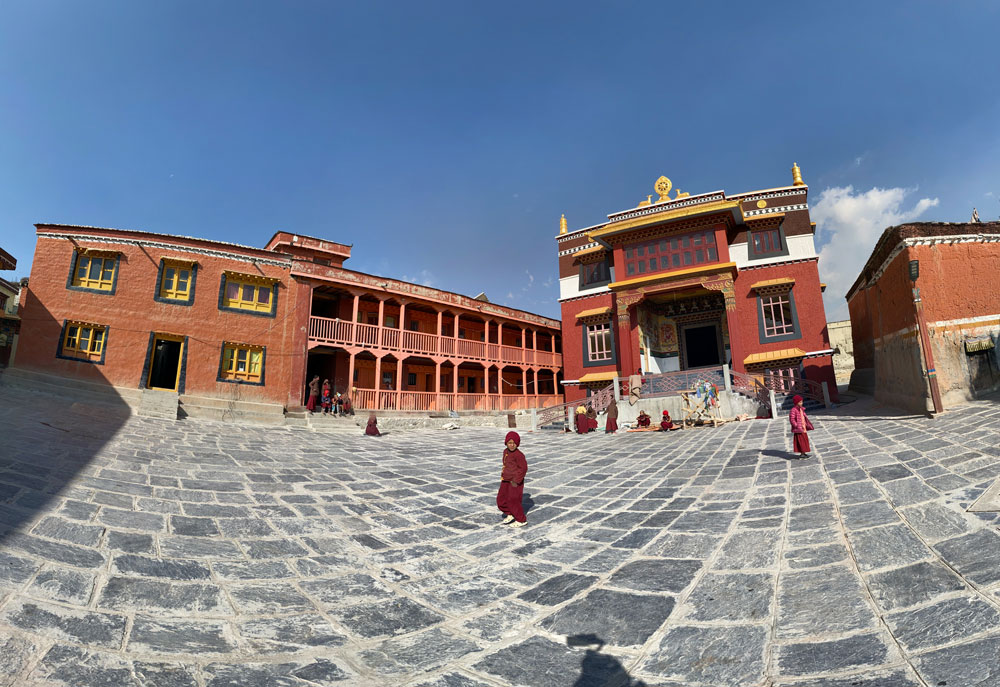
The architecture of those Gompas themselves is quite majestic and massive. Made with the help of 1000-year-old mud and more than 500-year-old wooden logs as pillars, you can find ancient engineering’s presence.
In addition to the engineering, you can also see the sculptures of the 17th century which can give you a right glimpse of ancient architectural forms. Not only that but the storytelling in Buddhism with the help of Padmasambhava, Buddha, Guru Rinpoche, and Mandalas showcases the old art forms of Buddhist followers.
Many of the Monasteries are in critical condition being so old. They are being renovated which might still take around 10 years. Thus, visit the Upper Mustang before they are washed away by the modern art forms.
The major Monasteries that you should not miss while visiting Upper Mustang:
| Name of the Monasteries | Established in (Place and Date) |
|---|
| Kag Chode Gompa | Kagbeni (15th Century) |
| Chele Gompa | Chhuksang |
| Thrangu Tashi Choling Gumba | Ghiling (between 14th/15th century) |
| Lo Geme Shad Drup Darkeling Gompa | Ghami (14th century) |
| Tsarang Gompa | Tsarang (13th century) |
| Ghar Gumba monastery | Dhakmar (8th century founded by Padmasambhava) |
| Thupchen Gompa | Lo Manthang (Late 15th century) |
| Jampa Gompa | Lo Manthang (Early 14th century) |
| Chode Gompa | Lo Manthang (13th century) |
| Garghu Dhejing Chhyoling Gompa (Garphu monastery) | Chhoser (15th century) |
| Nyiphuk Namdol Norbuling Gompa | Chhoser (14th century) |
| Samduling Gompa | Lo Manthang |
| Namgyal Monastery (Thukten Dharkelin Gompa) | Lo Manthang (10th century) |
Visiting the Residential Sky Caves and Red Cliff in Dhakmar and Chhoser
Dhakmar: This village is famous for its striking red cliffs. Local folklore claims these cliffs were stained red by the blood of a demon beheaded by a powerful God. However, science offers a different explanation. Regardless of origin, the red cliffs dominate the landscape, creating a dramatic backdrop.
Dhakmar also boasts interconnected "sky caves" carved directly into the cliffs. Though not large, these caves provided sleeping quarters for past inhabitants, hinting at a resourceful way of life.
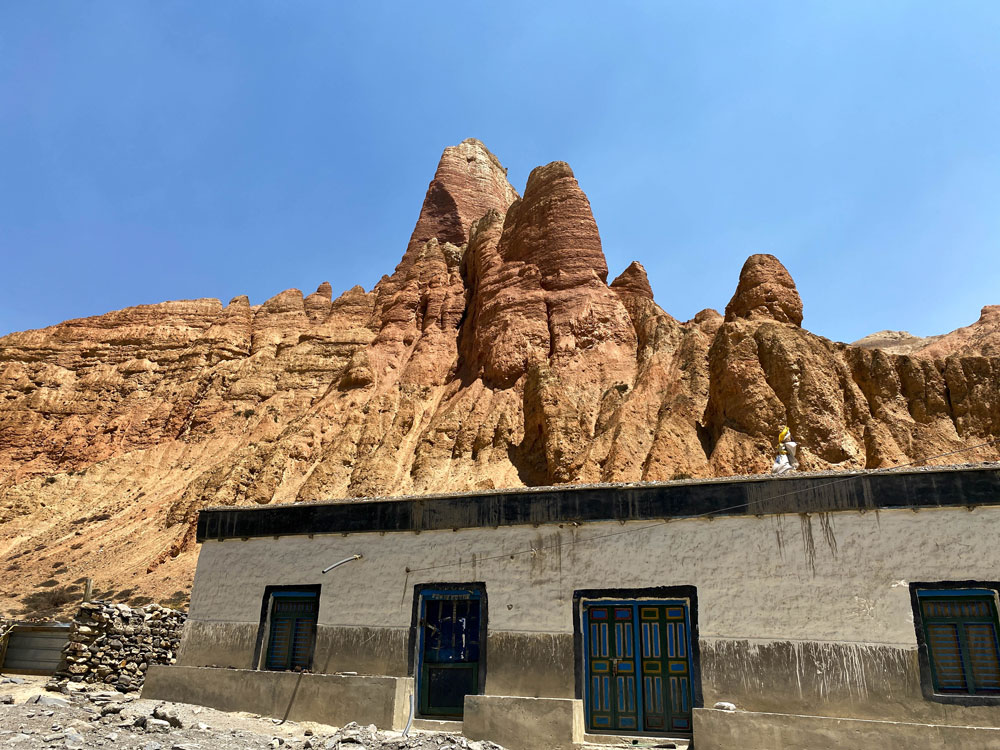
Chhoser: While Dhakmar has red cliffs and sky caves, Chhoser takes center stage for its "Shija Jhong Sky Cave." This cave system was once home to the entire village of Chhoser. Villagers resided in these caves for generations, living a traditional lifestyle high above the valley floor.
The Maoist insurgency in Nepal prompted a shift, with villagers moving to a newly established village at a lower altitude. Today, the Shija Jhong Sky Cave stands as a reminder of Chhoser's unique past and cultural resilience.
Conclusion
The answer to why Upper Mustang is must visit destination is a visual feast for everyone. The permits are for sure a bit pricier than other places in the country. But the permit fee is worth it to go to the Walled Cities, visit the ancient monasteries, and live among the locals.








